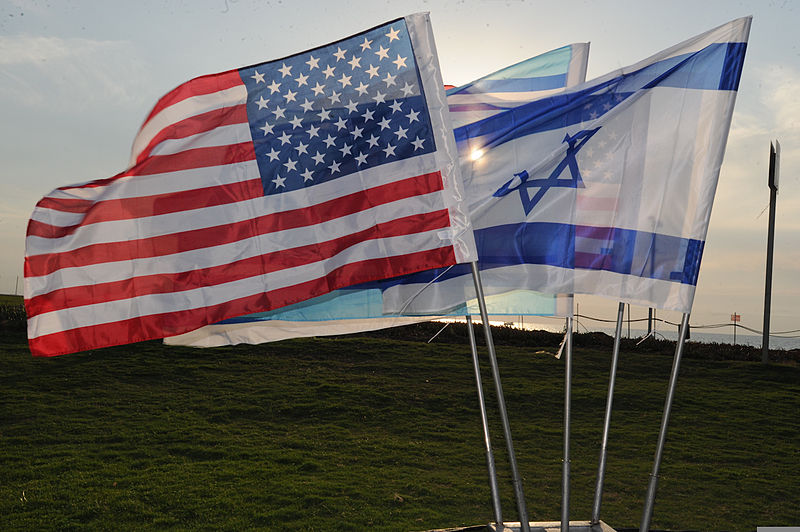EXECUTIVE SUMMARY: Israel and the United States have a long history of close intelligence cooperation. Apart from the regular provision of useful strategic and political intelligence, Israel’s wars against the Soviet-armed and trained Arab armies afforded invaluable insights into Soviet military doctrine and weapons systems. In the late 1970s and early 1980s, Israel made a unique and particularly valuable contribution by shedding fresh light on Moscow’s nuclear-equipped intercontinental ballistic missiles threatening the United States.
The intelligence cooperation between Washington and Jerusalem is one of the cornerstones of the strategic alliance between the two states. Given the extensive U.S. military aid to Israel along with Washington’s and the American public’s backing of Israel in the international arena, it has been widely argued that the alliance unilaterally favors Israel. In reality, however, the partnership has been bidirectional. From the global standpoint, Israel has provided a bulwark that protects U.S. and Western interests in the Middle East and has taken the brunt of Islam’s Manichean confrontation with Western civilization.
To be sure, Israeli-American intelligence cooperation has encountered some bumps along the road. Thus, for example, Israeli Prime Minister Menachem Begin did not inform the Reagan administration of Israel’s plans to destroy the Iraqi nuclear reactor in 1981, even though the two intelligence communities had signed a memorandum on this issue about a year earlier; Washington responded by chilling intelligence cooperation with Jerusalem for a short while. Conversely, the United States, along with Britain, kept Israel in the dark about secret contacts with Muammar Qaddafi in 2003, which led to the dismantling of Libya’s mass-destruction weapons program. Likewise, in May 2017, Trump reportedly shared with Russian foreign minister Lavrov sensitive obtained by Israel about ISIS’s terrorist plans.
These mishaps notwithstanding, Washington and Jerusalem have maintained a strong intelligence relationship since the 1950s. The foundation for this relationship was laid in 1956, when the Mossad obtained the text of a secret speech by the then Soviet leader, Nikita Khrushchev, at the Communist Party Congress, in which he lambasted the tyrannical practices of his predecessor, Joseph Stalin. After the speech was published in The New York Times, the shock over Stalin’s crimes helped delegitimize the Soviet regime among the Western public.
During the 1950s and 1960s, the Middle East served as a combat testing ground for Soviet military doctrine and advanced weaponry, with the experience amassed by Israel in its wars against the Egyptian, Syrian and Iraqi armies—trained by Soviet advisers and equipped with Soviet weapons—providing the U.S. military with operational lessons; information about new Israeli technologies to neutralize the Soviet weaponry; and direct access to Soviet weapons systems captured by Israel. Within this framework,
- In 1966, an Iraqi pilot defected to Israel in a MiG-21 fighting aircraft.
- After the June 1967 War, Israel transferred to the US a SA-2 surface-to-air-missile battery seized by the IDF.
- In August 1968, two Syrian MiG-17s landed by mistake in a Galilee landing site.
- In December 1969, during the Egyptian-Israeli War of Attrition, Israeli paratroopers raided an Egyptian radar station in Ras Gharib near the western shore of the Gulf of Suez, bringing back an advanced radar of the P-12 model.
- According to Professor Yuval Neeman, who, during the October 1973 War attended meetings of the cabinet and the IDF General Staff, Maj. Gen. Ariel Sharon’s division seized (on Oct. 18) a complete Egyptian SA-6 surface-to-air-missile battery.
- Similarly, during the 1967 and 1973 wars the IDF seized over a thousand Egyptian and Syrian T-54 and T-55 tanks. A large number of T-62 tanks, some of them intact, were captured on the Syrian front during the 1973 war.
- In his book Red Flag over the Mediterranean (2017), Pesach Malovany noted that during the 1982 Lebanon War, Israel reportedly obtained unknown information concerning the Russian T-72 tank.
- Finally, in October 1989 a Syrian MiG-23 defected to Israel.
During the Cold War, U.S. intelligence had difficulty collecting information from behind the Iron Curtain, instead concentrating on technical means of collection, especially aerial photography: first by U-2 planes, then by satellites. Thus, particularly in domains of a clearly technological nature such as the Soviet nuclear threat, it was easy to err through over- or underestimation.
History, however, tends to repeats itself to a certain extent. The current nuclear threat to the US comes from North Korea, and, as in the 1970s and 1980s, the US intelligence community has difficulty collecting and assessing intelligence. But, unlike the Soviet leadership during the Cold War, which acted in a rational and calculating manner, Kim Jong-Un’s main hallmark is his unpredictability.
The full article can be read here and was initially published as a BESA Center Perspectives Paper No. 751, Feb. 26, 2018.


























